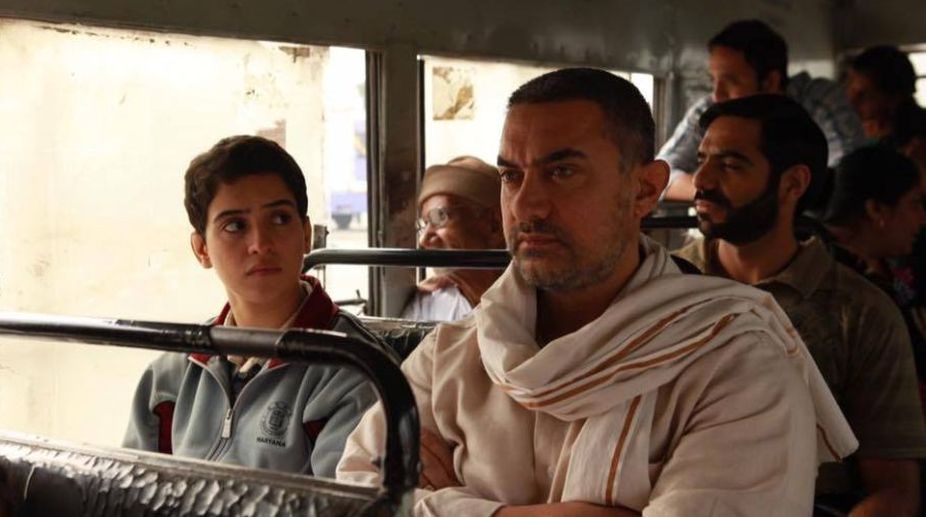Fatima Sana Shaikh reveals her casting couch experience in the South
'Dangal' fame Fatima Sana Shaikh opens up about her distubring casting couch experiences in the South. Details inside.

A still from the film 'Dangal' (Photo: Facebook)
When the so-called New Indian Cinema came into existence in the 1970s, there was a running debate on the dividing line between art and commerce. The popular cinema of the 1960s had thrived on the mass appeal of stars, lavish sets, attractive locations and brilliant musical compositions. All this brought a stream of popular actors, musicians and professionals who managed to create a world of colourful fantasy that fetched a huge response. However, a reaction began in the late sixties spearheaded mainly by graduates from the Pune film institute who believed that audiences need to be given a choice between mindless entertainment and serious reflection. Bhuvan Shome was said to be the first film that began the trend in what was called the “parallel” movement. It had the support of the Film Finance Corporation set up by the government. Soon a series of films from different regions made on modest budgets tried to explore the realities of life — mostly in harsh tones. It was then that many within the industry and writers outside began to emphasise the division between art and commerce.
The general perception was that the art cinema was meant for entry in foreign festivals while the commercial cinema would be doing business in theatres with the Hindi cinema — no one had started calling it Bollywood till then — claiming the best slots. Directors like Manmohan Desai, Raj Khosla, Sippy, Shakti Samanta and Vijay Anand were not too concerned about being left out of the awards lists till someone got the bright idea of convincing the government that a category called the “best film with wholesome appeal” in the national awards should be introduced. However, the mocking tones with which the leaders of popular cinema spoke about art filmmakers continued largely because these films seldom found a regular release in theatres and all that these filmmakers could claim was the pride in representing India at a foreign festival or bagging a national award.
Advertisement
The debate comprised the relative importance of the two streams in a situation where it was necessary to allow creative ideas to be expressed without any hindrance while popular fantasies thrived on the response from the masses. The justification for making mindless blockbusters like Evening in Paris, Love in Tokyo, Junglee, Teesri Manzil, Waqt, Kashmir Ki Kali and many more was that the masses wanted more entertainment. Who were the art filmmakers and their supporters to object? Besides these big productions began to demonstrate the technical skills in photography, editing and sound recording with which the makers of art cinema were not in a position to compete. Cinema, they argued, was as much about making the best of technical resources as about offering dark comments on the realities of life.
Advertisement
And, they added, of what use were those messages when they could reach only a minority of discerning viewers who were, in any case, more socially aware than the bulk of filmgoers who queued up outside the theatres. Seminars did take place at festivals on the social relevance of films made by Adoor Gopalakrshnan, G Aravindan, John Abraham, Saeed Mirza, Girish Kasaravalli, BV Karanth, Gautam Ghose, Jahnu Barua and Bhaben Saikia. But the overall impression survived about how seldom their films were found in theatres till the New Indian Cinema died a natural death. The films are still occasionally pulled out of the archives as study material. But this phase of Indian cinema is recalled primarily to emphasise the talent that had emerged during those years with varying degrees of success in their later work while the movement itself was overtaken by the rapid growth of technology.
All this deserves to be recalled because the debate on the dividing line between art and commerce has become irrelevant. There was a time when a group of filmmakers like Hrishikesh Mukherjee and Basu Chatterjee were seen to be treading a middle path. Now even that path has been washed out by films that have big stakes in the market and embrace all kinds of audiences — those who like their entertainment as well as those who look for social content. A film like Satya spoke of an immigrant in Mumbai who gets sucked into the underworld. It was written by Anurag Kashyap and Saurabh Shukla for director Ram Gopal Verma, making the best use of technical resources to make a hard hitting comment that removed the barriers and found a huge response.
The same experience came in a string of Aamir Khan films — Lagaan, Taare Zameen Par, PK and Dangal. Each of these has revealed a new side of the actor’s creative personality. The films have fetched handsome rewards. But the point is that each has something for the mind that is as gripping as the excellently crafted images and the handling of characters that audiences are familiar with.
In his latest work, Dangal, the comment on the liberation of women may be lost in the popular appeal of a sport that is laced with an emotional drama. But that is the power of the actor who has reinvented himself quite brilliantly with meaningful ideas while there is entertainment enough for a general audience. Does anyone think of dividing art and entertainment?
Advertisement